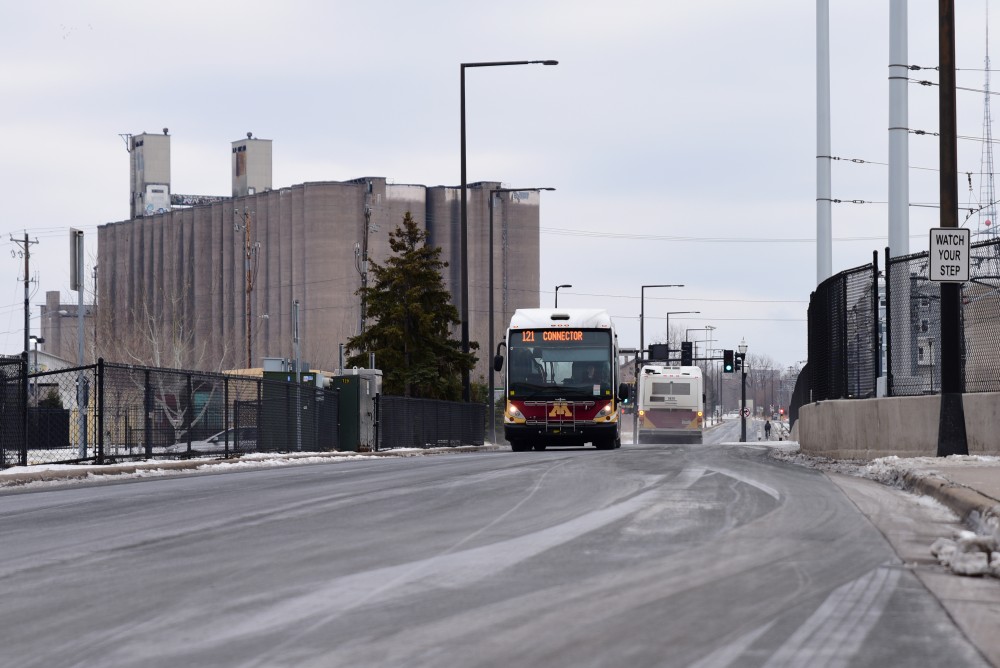The University of Minnesota Transitway – connecting East Bank to the St. Paul campus – may be relocated.
The University of Minnesota and the Prospect Park Association have held conversations in support of moving the roadway to allow further development in the neighborhood.
PPA included the relocation in the planning framework that it will submit by the end of the year for the Minneapolis 2040 Plan — the City’s outline for projects for the upcoming years.
Under PPA’s plan, the transitway would move two blocks north and run along the railroad tracks.
John Wall, president of The Wall Companies, said he would like to see the transitway moved to improve access to his Malcolm Yards development.
Malcolm Yards, a proposed office, retail and housing space, would be separated from the Prospect Park neighborhood by the transitway.
“I think [it’s] a fantastic idea, but … we’re going to do our development anyway, whether we move the transitway or don’t move the transitway,” Wall said.
While the idea of moving the transitway has been discussed before, Wall said increased development in Prospect Park has drawn a need for more roadways.
Although the University is not submitting a 2040 Plan, it will comment on the City’s 2040 plan in early 2018 in support of moving the transitway, said Leslie Krueger, chief of staff for University Services.
But funding for the relocation would have to come from Prospect Park developers and the City, said Michael Berthelsen, vice president of University Services.
“We are open to ideas about a new transitway location,” Berthelsen said. “But that would have to be part of something that the City would … advance.”
The new transitway would also have to be similar for the University to support the relocation, Berthelsen said.
“There still needs to be that same kind of connection between campuses that is safe, secure and speedy,” Berthelsen.
The University has collaborated with the Towerside Business Alliance and the University District Alliance on its comments.
“We recognize just generally that the success of the neighborhoods around campus… really impact the University’s success,” Krueger said.
Ultimately, Krueger said the relocation will likely be part of an entire recreation of the transportation grid in Prospect Park.
“The entire area around there is lacking a transportation grid,” Krueger said. “This would be in the context of a larger… system that supports development in the area.”
“We’re open to it, and engaging with all of the partners to how that could be achieved,” Berthelsen said.








